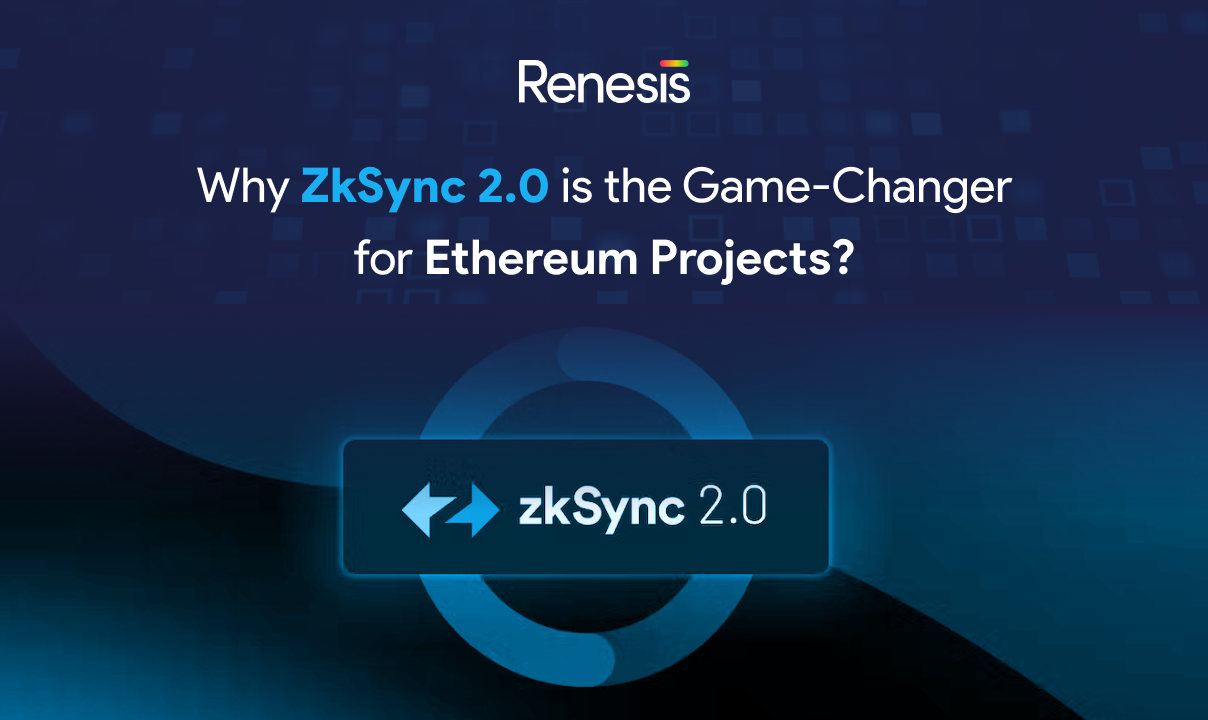Why ZkSync 2.0 is the Game-Changer for Ethereum Projects?
Blockchain technology has been making waves for over a decade, with Ethereum leading the charge as a platform for decentralized applications (dApps). Despite these challenges, Ethereum is still scalable and has high fees. That’s where ZkSync 2.0 comes in as a game-changer for Ethereum projects. In this blog post, we’ll dive into what ZkSync 2.0 is, its benefits, and why it’s the future of Ethereum.
Let’s dive in!
Understanding ZkSync 2.0
ZkSync 2.0 is a Layer 2 scaling solution built on top of Ethereum. It leverages zero-knowledge proofs to allow for fast and cheap transactions while maintaining the security and decentralization of Ethereum. The technology is designed to enable large-scale applications to be built on Ethereum, which would be impossible without Layer 2 scaling solutions.
Benefits of ZkSync 2.0
ZkSync 2.0 offers several benefits for Ethereum projects.
Scalability:
As more dApps are built on Ethereum, the network becomes congested, leading to slow and expensive transactions. ZkSync 2.0 allows for up to 2,000 transactions per second, making it possible to handle the traffic of large-scale applications.
Reduced Transaction Fees:
With Ethereum’s high gas fees, small transactions become uneconomical. ZkSync 2.0 offers transaction fees that are a fraction of Ethereum’s, making it possible for developers to build applications with micro-transactions and other use cases that were previously not feasible.
Improved User Experience:
Slow and expensive transactions can drive users away from dApps. With ZkSync 2.0, transactions are fast and cheap, providing a seamless user experience that is essential for the success of any application.
How ZkSync 2.0 Works?
Now that we understand the benefits of ZkSync 2.0 let’s dive into how it works. With ZkSync 2.0, value can be transferred without sharing any information about the sender, receiver, or transaction amount, courtesy of zero-knowledge proofs. This makes transactions on ZkSync 2.0 more private and secure than on Ethereum.
To use ZkSync 2.0, users deposit their Ethereum tokens into a smart contract on the Ethereum blockchain. This deposit is then used to create a zkRollup, which is a compressed version of the Ethereum blockchain that stores the state of all transactions. This zkRollup is periodically synced with the Ethereum blockchain to maintain security and decentralization.
When a user wants to make a transaction on ZkSync 2.0, they submit it to zkRollup. The transaction is then validated using zero-knowledge proofs, which prove that the transaction is valid without revealing any information about it. Upon validation, the smart contract adds the transaction to the zkRollup, where it is reflected in the user’s Ethereum balance.
Why ZkSync 2.0 is the Future of Ethereum Projects?
This process allows for fast and cheap transactions on ZkSync 2.0 while maintaining the security and decentralization of Ethereum. It also allows for a seamless user experience, as users can interact with dApps on ZkSync 2.0 just as they would on Ethereum.
So, why is ZkSync 2.0 the game-changer for Ethereum projects? The answer lies in its ability to enable large-scale applications to be built on Ethereum. Without Layer 2 scaling solutions like ZkSync 2.0, Ethereum would be limited in its capabilities and unable to handle the traffic of popular applications.
For example, decentralized finance (DeFi) applications have exploded in popularity over the past year, but they’ve also faced challenges with high gas fees and slow transaction times on Ethereum. With ZkSync 2.0, DeFi protocols can now be built with micro-transactions and a more seamless user experience, making them more accessible to a wider range of users.
Use Cases
ZkSync 2.0 also enables new use cases for Ethereum projects, such as gaming and non-fungible tokens (NFTs). Gaming on Ethereum has been limited due to high fees and slow transaction times, but with ZkSync 2.0, developers can create games with in-game purchases and other micro-transactions. NFTs, which are unique digital assets stored on the Ethereum blockchain, have also faced challenges with high fees, but ZkSync 2.0 makes it possible to create and trade NFTs with low transaction fees.
Another reason why ZkSync 2.0 is the future of Ethereum is its interoperability. ZkSync 2.0 is designed to be compatible with other Layer 2 scaling solutions, which allows for even greater scalability and interoperability within the Ethereum ecosystem. This will enable developers to create more complex applications that can interact with each other seamlessly, further expanding the capabilities of Ethereum.
ZkSync 2.0 is a game-changer for Ethereum projects. Its ability to offer fast and cheap transactions while maintaining the security and decentralization of Ethereum makes it a powerful tool for developers building large-scale applications. ZkSync 2.0 enables new use cases for Ethereum, such as gaming and NFTs, and its interoperability with other Layer 2 scaling solutions will further expand the capabilities of the platform. If you’re a developer building on Ethereum, it’s time to consider ZkSync 2.0 as the future of scalability and user experience.
So, what are you waiting for? Dive into the world of ZkSync 2.0 and unleash the full potential of Ethereum!










